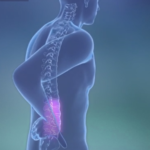Spastic colon is a condition of the large intestine marked by abdominal cramping and pain, bloating, gas, diarrhea, and constipation. In most cases, patients experience mild symptoms, but sometimes it may be severe.
Spastic colon is also referred to as irritable bowel syndrome/IBS. It may however be noted that the term spastic colon refers to increase in motility, sudden spasms, and contractions of the small and large bowels, symptoms which are associated with IBS. However, IBS may also occur with low bowel motility. Hence, using spastic colon to describe a condition of IBS may not be right at all times.
Spastic colon is a persistent condition. Treatment includes management of symptoms over a prolonged period, proper diet, stress reduction, medicines, counseling, and lifestyle changes. Other inflammatory bowel diseases like ulcerative colitis or Crohn’s disease carry an increased risk to intestinal tissue changes and/or colorectal cancer. Spastic colon does not pose such risks.
Symptoms of spastic colon
Spastic colon is typically chronic and patients may experience temporary improvement of symptoms followed by exacerbation of bowel problems or complete alleviation from the abnormalities.
Signs and symptoms of spastic colon vary widely between patients. A few common symptoms are mentioned below:
- Bloated stomach
- Stomach cramping
- Pain in abdomen
- Gas
- Stool with mucus
- Constipation and/or diarrhea. These bowel movement problems may sometimes occur in alternating episodes in some patients. They may deteriorate if a patient is also suffering from hemorrhoids.
- Spastic colon patients typically avoid certain foods that can trigger the symptoms. This means that the patient’s body does not get all the nutrients, which can eventually result in malnutrition or malnourishment
- The quality of life is severely affected by IBS. Patients may not be able to live and lead a life that they desire and this can trigger stress, depression, and other mental problems.
Causes of spastic colon
The precise cause of spastic colon is not known. Some of the factors which are believed to contribute towards occurrence of the bowel disorder are mentioned below:
- The walls of the intestines feature layers of muscles that facilitate passage of digested food present in stomach across the intestinal tract to the rectum via coordinated contraction and expansion/relaxation. The contractions of the muscles are stronger and last for a longer time in spastic colon patients, thereby causing gas, bloating, and diarrhea. In other cases, the contractions may be weaker than usual, thus resulting in slow movement of food and subsequent removal of hard and dry feces.
- Underlying gastrointestinal nervous system problems may also play a role in occurrence of spastic colon. Affected people may experience a lot of distress due to increased stretching of stomach by gas and stool buildup. There is lack of coordination between the intestines and the signals transmitted by the brain; this may trigger abnormal reaction by the body to the everyday digestive processes and result in diarrhea, cramps, pain, and/or constipation.
Below listed risk factors can pose increased vulnerability to developing spastic colon:
- Even though research is ongoing about the connection between food allergies and intolerance to the development of IBS, medical experts know that the symptoms become more intense in some patients after the intake of certain kinds of foods. These foods include spices, fats, fruits, carbonated beverages, alcohol, milk, broccoli, cabbage, cauliflower, beans, chocolate, and dairy products.
- Studies have found that increased stress can cause the symptoms to exacerbate. Stress has however not been determined as a factor that causes spastic colon.
- The incidence rate of IBS in women is 2 times that in men. Symptoms usually become worse when affected women are menstruating or near that time of the month. It is therefore believed that hormonal changes may increase the risk to developing spastic colon.
- Gastroenteritis, SIBO or intestinal bacterial overgrowth, and the bowel diseases may also play a role.
- Other risk factors include age of 45 years or more, family history of the bowel disease, and anxiety and other mental or personality disorders.
Treatment of spastic colon
There is no cure for spastic colon. Treatment involves controlling symptoms and preventing aggravation of bowel problems.
- Spastic colon with mild symptoms can be managed with proper diet, stress alleviation, lifestyle changes, regular sleep, intake of adequate water and fluids, exercising, and avoiding trigger drinks and foods.
- Moderate and severe symptoms of IBS may be treated as follows:
- Diet changes that includes removing:
- Wheat, barley, rye, and other gluten grains and foods
- Certain kinds of carbs like fructose, fructans, lactose, and FODMAPs that are found in some grains, vegetables, fruits, and dairy/milk products
- Excessive gas causing veggies like cabbage, broccoli, cauliflower; raw fruits; and carbonated or aerated beverages
- Antibiotics are used for eliminated overgrowth of bacteria in bowels
- Constipation can be alleviated with fiber supplements. Use laxative if suggested by doctor
- Antidepressants, SSRIs, or tricyclic antidepressants for easing pain and mental problems and reducing activity of bowel controlling neurons
- Anticholinergic and antispasmodic drugs can help find relief from painful and distressing spasms.
